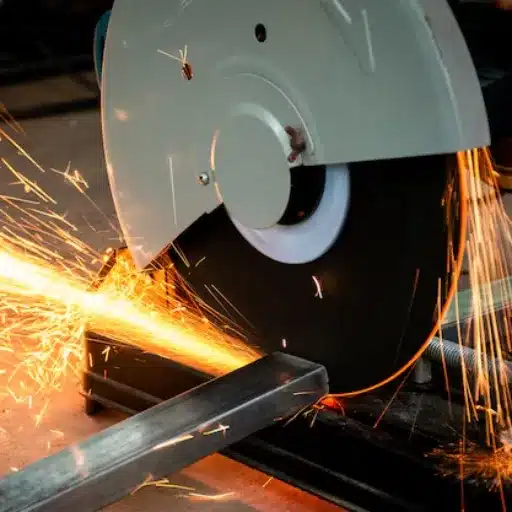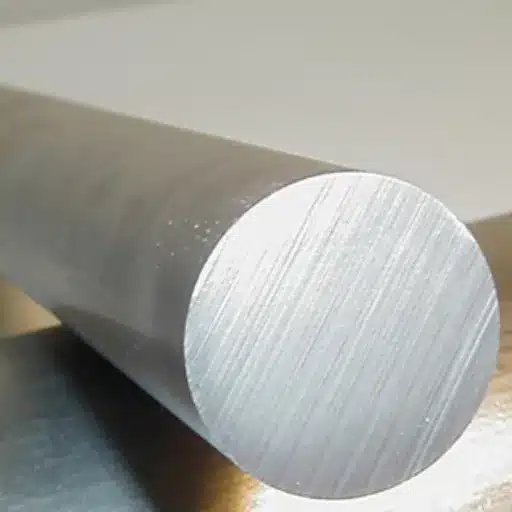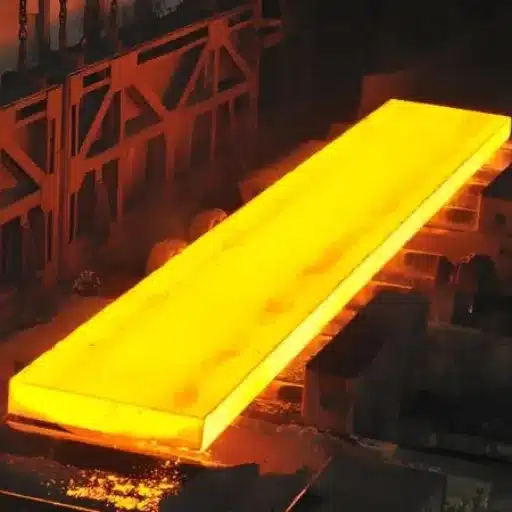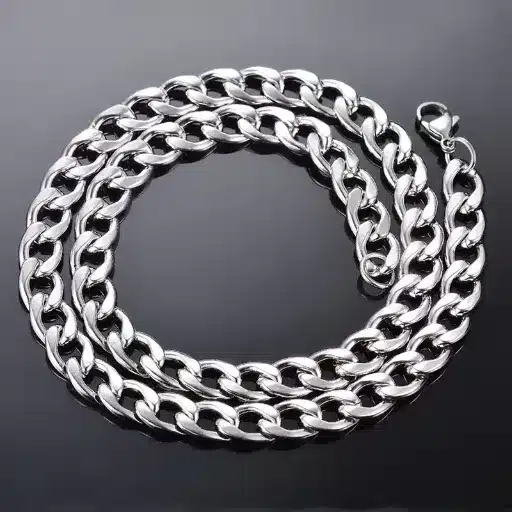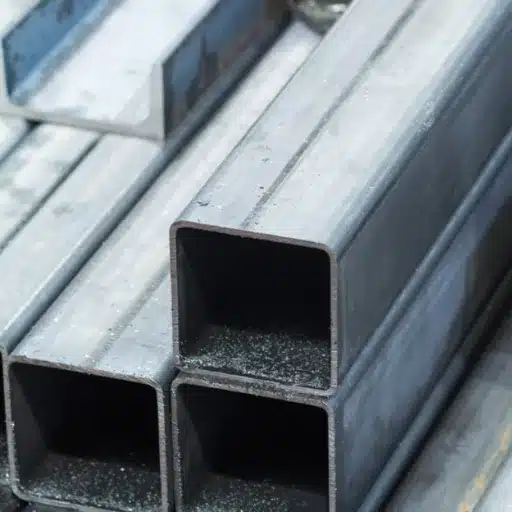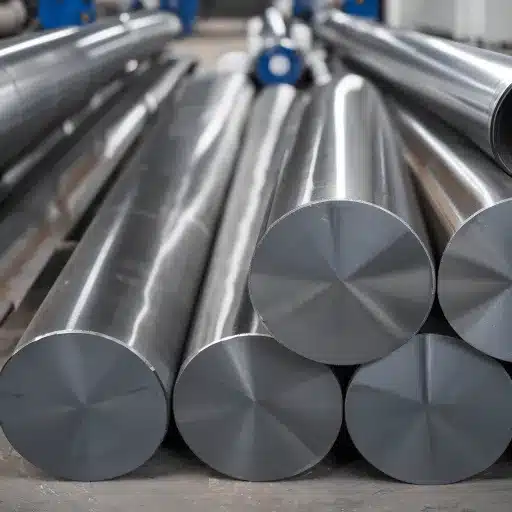Different projects like construction, manufacturing, engineering, etc., thrive or destroy due to the materials. Steel emerges as a significant, beneficial, long-lasting, and strong material among many others. Do you know that ‘steel grades’ are not the same? Try one exemplary grade that has become sewn into the fabric of business worldwide. It’s grade 316.
We will explore the specific features, applications, and advantages of grade 316n and explain its popularity in high-explosive demanding industries. If you are a practitioner concerned about which materials would best fit your project, or have an interest in a wide variety of steel grades, I suggest using this extensive description to augment your knowledge. Prepare to shatter grade 316n and reveal its place in the steel kingdom.
Introduction to Gradgrade 316N
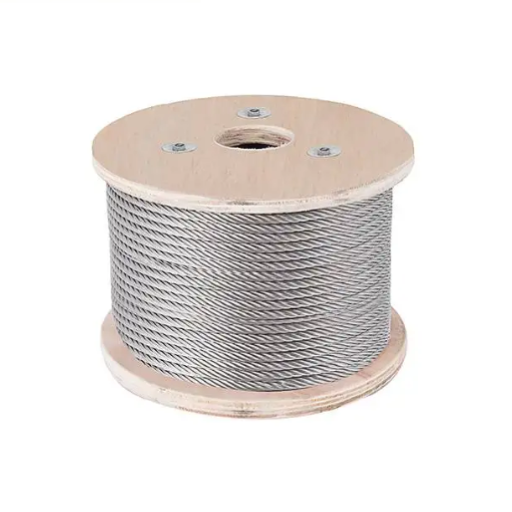
Gradgrade 316N is a specific variant of stainless steel known for its strength, non-toxicity, and resistance to wet environments. It falls within the 316 series steels but is fortified with nitric oxide to enhance its mechanical characteristics. This makes it suitable for harsh environments, especially in industries such as chemical processing, marine engineering, or food production, where the material must operate under harsh conditions. Thus, covering that broad spectrum between durability and utility is, however, grade 316N, which is a better selection for longevity and wear-resistant applications.
What is Gradgrade 316N?
The GradGrade 316N stainless steel is an enhanced alloy of the 316 series, offering benefits such as noticeably enhanced strength, additional anti-corrosive properties, and long-term performance in various environments, including chemical, marine, and industrial settings.
Importance of Steel Grades
The grades of steel are a vital factor when it comes to the appraisal of the capability of the steel towards a particular task, far as durability and performance are concerned. Various grades of steel are developed to meet the specific needs of different industries, ensuring that the material is not compromised by adverse environmental conditions, mechanical action, or chemical reactions. As an illustration, the presence of nitrogen in stainless steel, specifically in the composition known as Grade 316N, increases the steel’s strength, particularly its durability in aggressive media.
A market analysis conducted in 2023 reveals that the global stainless steel market is predicted to register a compound annual growth rate (CAGR) of 5.8% until 2030, demonstrating significant opportunities for high-quality steel materials in demand in the construction, automotive, and energy industries. One of the most common steel grades includes grades 304 and 316, where grade 316N is most preferred due to its exotic characteristics, used in industries where extreme tolerance surfaces are required.
Grades such as 316N can be considered substantive in application due to their properties, including high tensile strength, integrity against pitting and crevice corrosion, and their usefulness in materials across a wide range of temperatures, whether below freezing or above. This has led to a reduction in maintenance-related costs, an impressive increase in the working life of a component, and dependable results, especially in sectors such as marine, chemical, and medical engineering, where tolerance levels are high and any loss of performance can have a significant impact.
With the improvements in metallurgy and material science come new grades, which also support the modern industrial policy rationale of promoting eco-efficiency, safety, and cost-savings. Consequently, choosing the correct steel grade is more than just an issue of ‘work material’ but a huge determinant of the success and survival of projects all over the world.
Applications of Gradgrade 316N
Grade 316N is composed of solid solution-strengthened austenitic stainless steel. Thanks to its excellent mechanical properties, corrosion resistance, and high tensile strength, grade 316N stainless steel is a dependable material that can be used in many harsh environments. Here are five potential applications of Gradgrade 316N:
Reactive Supporting Structures/Chemical Treatment
Gradgrade 316N is commonly used for the fabrication of reactors, storage vessels, and heat exchangers within the chemical industry due to its high resistance to corrosion and high temperatures.
Naval Engineering Applications
Due to its excellent resistance to pitting and stress corrosion cracking in saline and wet environments, it finds a wide range of applications in marine environments, including ship propeller shafts and fittings, and jackets.
Nuclear Power Enhancements
The alloy’s ability to withstand intense radiation levels while maintaining its strength and integrity makes it an ideal choice for applications such as nuclear reactors, fuel storage containers, or other critical components.
The pharmaceutical industry and the processing of food
Due to the fact that it is a sanitary metal that is easy to clean, grade 316n is installed in various equipment of pharmaceutical and food industries, such as pipelines, mixers, vessels, etc., to ensure safety and health preservation.
Construction and provisions of infrastructure
Gradgrade 316n is used in most modern architectural designs due to its long-term durability and negative environmental resistance, making it suitable for constructions such as bridges, tall buildings, and claddings.
Properties of Gradgrade 316N
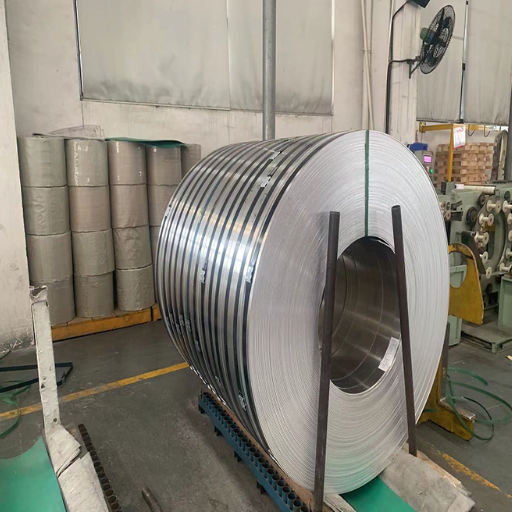
Chemical Resistance
The built alloy called Gradgrade 316N is chemically resistant in extreme conditions characterized by the presence of chlorides, acids, or elevated moisture content. This makes it particularly applicable in both marine and industrial scenarios.
High Temperature Resistance
Such a material is also known to be very stable, even when subjected to extreme temperatures for extended periods, which enhances its application in chemical processing and heat exchanger equipment.
Strength and Durability
Regarding the tensile properties and aging issue, it is safe to say that Gradgrade 316N can be used in any harsh structural and mechanical engineering conditions.
Hygienic and Safe
The sheet of this metal is so round and clean that it does not react with anything, and it is very convenient to carry out any decontamination measures easily.
Weldability
It is worth mentioning that grade 316N is highly weldable, making it suitable for use in intricate designs.
Unique Characteristics of Gradgrade 316N
Corrosion Resistance
Grade 316N steel is far more resistant to attack by marine atmospheres and chemicals than standard austenitic stainless steels, except for chlorides, possibly halides, and other oxidizing materials.
High Temperature Performance
Even with increasing temperature levels, there is no significant loss of physical strength in the material, making it a good candidate for heat exchanger construction and furnace parts.
Creep Resistance
Grade 316N offers good creep resistance at high stress and temperatures, enabling the material to perform satisfactorily and protect structures from unwarranted failures.
Low Maintenance
Work performed with this material requires less maintenance and therefore reduces extra cost.
Aesthetic Appeal
It has a unique, gleaming surface, which means that materials like Grade 316N Stainless Steel can be used for building, or even making utensils or designs, when beauty is a primary requisite, along with practicality.
Comparison with Other Stainless Steels
| Parameter | 316N | 316 | 316L | 316Ti |
|---|---|---|---|---|
| Nitrogen Content | 0.10–0.20% | ≤0.10% | ≤0.10% | ≤0.10% |
| Carbon Content | ≤0.08% | ≤0.08% | ≤0.03% | ≤0.08% |
| Tensile Strength | 550–620 MPa | 520–620 MPa | 485–620 MPa | Similar to 316 |
| Yield Strength | 240 MPa | 205 MPa | 170 MPa | Similar to 316 |
| Corrosion Resistance | Excellent, especially in chlorides | Excellent, general-purpose | Superior in welded sections | Enhanced intergranular resistance |
| Weldability | Excellent, no post-weld annealing | Excellent | Excellent | Good |
| Magnetism | Non-magnetic (annealed) | Non-magnetic (annealed) | Non-magnetic (annealed) | Non-magnetic (annealed) |
| Applications | Marine, chemical, and food industries | Food, medical, and marine industries | Chemical, medical, and marine industries | Food, shipbuilding |
| Thermal Conductivity | 15 W/m-K | 15 W/m-K | 15 W/m-K | Similar to 316 |
| Melting Range | 1400–1440°C | 1400–1440°C | 1400–1440°C | Similar to 316 |
| Cost | Higher than 316 | Moderate | Moderate | Higher than 316 |
Corrosion Resistance and Durability
The quality of grade 316N is a target for improvement due to its production aspects, corrosion resistance, and long-lasting wear properties when applied in aggressive environments. There are five key points to address on this issue.
Chloride Environments
As for corrosion, grade 316N extension slightly improved yet much better than normal usage in chloride-enriched environments like the sea, where ordinary stainless steels are reduced very much by pitting and attack within crevices.
Coatability
Similarly, that grade remains stable when applied to high-temperature inulin surfaces, such as 1600°F. This is very normal. Oh, and those elements designed include As, Co, Ni, and W. And surprisingly, following the same principle, or probably slightly beneath the concept, very shallow changes take place in max temperature as well, shall I say, such zones.
Resistance to Acids
Of great significance is the improved grade; the additional elements, such as molybdenum, provide material with excellent performance in aggressive media, including those with sulfuric acid or hydrochloric acid, thereby minimizing possible material erosion.
Prolonged Service over Stress
Such situations arise particularly frequently in the processing industry. Even in the most demanding mechanical and environmental conditions, grade 316N retains this characteristic, making it durable and stable over time.
Fatigue and Cracking Resistance
This stainless steel is highly resistant to stress corrosion cracking as well as fatigue, making it suitable for applications subjected to dynamic or pressurized loads, such as chemical plants.
Therefore, the listed qualities make grade 316n very popular in cases where strong and resistant materials are needed in various industries.
Use in High-Temperature Environments
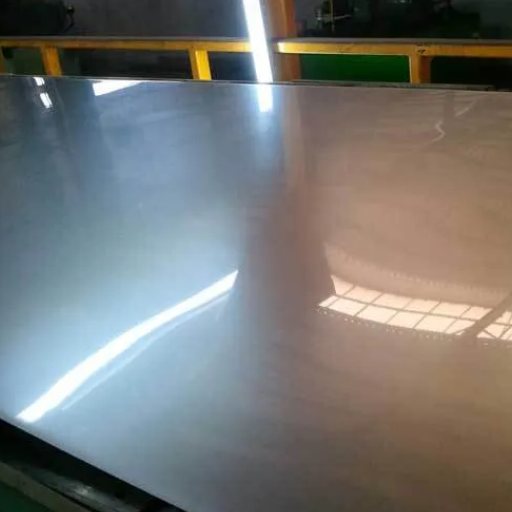
Grade 316N is favorable in elevated temperature conditions; this is because, in such situations, it retains its mechanical properties and does not oxidize easily. The temperature for occasional use is approximately 870 °C (1598 °F), and the constant temperature is near 925 °C (1697 °F). The secret here lies in the alloy’s high levels of nickel and molybdenum, which make these properties possible even under thermal stress.
Non-scaling in such conditions is a fundamental property of grade 316N. For instance, it is not uncommon for parts and assemblies in industrial furnaces and heat exchangers to be subjected to extremely high temperatures for an extended period. The formation of a chromic oxide film on the surface of stainless steel 316N ‘seals’ the steel from surface deterioration, thereby enabling the steel to operate for a more extended period with fewer repair costs incurred.
Additionally, this material is known for its high creep strength, which is the ability to withstand deformation at long, sustained levels. This feature enables users to apply the structure, for instance, in power-generating stations or petrochemical facilities.
However, among austenitic stainless steels, grade 316N exhibits better thermal stability and is highly recommended for industrial applications where operating at elevated temperatures is crucial. Such an ability with which the alloy can deal with such capabilities shows the strength and adaptability of the material in the face of high thermal strains.
Applications in Chemical Processing
Gradgrade 316N is frequently used in chemical processing due to its exceptional ability to resist corrosion. Among the many uses of this material is that, once reactive chemicals and excessive thermal issues arise, it becomes of great importance. Related to this industry, below are five (5) critical areas of application:
Heat Exchangers
As there are other simpler heat exchangers available, grade 316N, on the other hand, is mainly used, as it is capable of withstanding high pressures and corrosive fluids.
Storage Tanks
This alloy stands out as the tank used for storing chemicals, encouraging long-term inhibition of decoating destruction.
Chemical Reactors
Its physical chemistry and Material properties mainly prevent degradation and thermal stress, enabling users to use them in conditions beyond synthesis temperatures for chemo reactions.
Pipes and fittings
Owing to the parameters, tubing systems employed in the chemical industry are designed from grade 316n. These pipes carry acidic or caustic solutions, and there is no failure due to leaks introduced during pressure application.
Distillation Columns
The warmth and effectiveness of this material’s manufacture are vitally significant to the functionality of high-temperature distillation, which uses aggressive conditions.
These cases highlight that the properties of grade 316N make it applicable and dependable in many spheres, not just in the chemical industry and material processing.
Role in Marine and Coastal Applications
Grade 316N type corrosion resistant alloy is primarily meant and employed for marine and coastal location applications because of its determination and exemplary performance in acidic and high salt concentration environments. These zones have been known to be affected by vast amounts of saline water, high levels of moisture, and fierce winds – conditions that are detrimental to most metals. These behaviors of 316N make it very useful for such situations. Some of the most significant contributions of Grade anti-corrosive steel 316 for marine equipment and construction of five of the various features as follows:
Shipbuilding and Construction of Marine Vessels
In places where the structural and non-structural members of ships are typically made of Steel hulls and Decks, containing a high level of salt and a strong chemical environment, 316N steel is used, and none of the oils present in the structure lead to any corrosion or structural deterioration.
Oil and Gas Sector
Mainly for the pipelines, storage tanks, and structures, 316N is required for the transport of tanks and structures and, to some extent, in the corrosive offshore condition.
Naval Equipment
Welding chains or mounting chains, using anchors and winches — these and numerous other hardware applications utilize 316N for the corrosion resistance it offers, primarily when submerged in seawater for an extended period.
Coastline Structures
Resourceful features of 316N concerning salt spray, such as the performance of a bridge, pier, or seawall from breaking down for a considerable time.
Water Desalination Facilities
The functioning and design of processes such as reverse osmosis, including the provision of valves and pumps, are a few examples that utilize 316N due to its chloride ion corrosion resistance, which enables the desalination of water.
Such examples highlight the importance of Gradgrade 316N in addressing specific problems characteristic of sea and inshore areas.
Comparative Analysis with Similar Materials
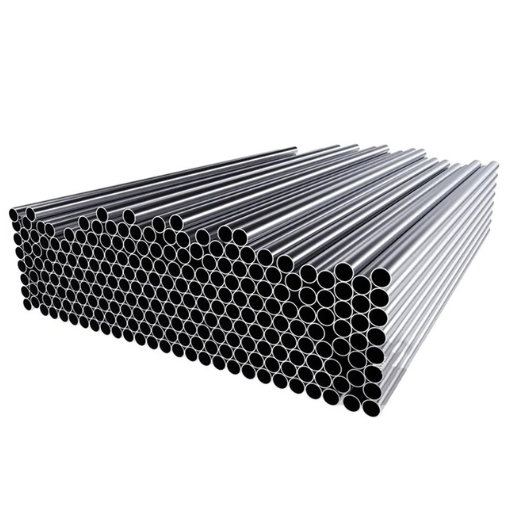
If applications in corrosive conditions are required, grade 316n is best known as an improvement of the 304 and 316 grades of stainless steel. Economically, 304 grade does not have the nitrogen-hardened resistance and chloride storage capacity of grade 316N for durability in sea applications. Compared to the standard grade 316, the enhanced tensile strength of grade 316N due to the addition of nitrogen is not compromised, while maintaining the same corrosion resistance. Thus, 316N is best suited for conditions of high strain energy, where the lifespan of materials is a crucial factor.
Gradgrade 316N vs. Carbon Steel
| Parameter | 316N Stainless Steel | Carbon Steel |
|---|---|---|
| Chromium Content | 16–18% | ≤10.5% |
| Carbon Content | ≤0.08% | 0.12–2.5% |
| Tensile Strength | 620–1160 MPa | 480–530 MPa |
| Yield Strength | 270–870 MPa | 260–450 MPa |
| Corrosion Resistance | Excellent, resists rust | Poor, prone to rust |
| Thermal Conductivity | 15 W/m-K | 52 W/m-K |
| Maximum Temperature | 940°C | 400°C |
| Hardness (Brinell) | 190–350 | 130–150 |
| Density | 7.9 g/cm³ | 7.9 g/cm³ |
| Electrical Conductivity | 2.3% IACS | 7.0% IACS |
| Cost | Higher | Lower |
| Applications | Marine, chemical, food industries | Construction, tools, automotive |
Gradgrade 316N vs. Other Alloy Steels
| Parameter | 316N Stainless Steel | Nickel Alloy 601 | 4140 Alloy Steel |
|---|---|---|---|
| Chromium Content | 16–18% | 21–25% | 0.8–1.1% |
| Nickel Content | 10–14% | 58–63% | 0.15–0.25% |
| Carbon Content | ≤0.08% | ≤0.10% | 0.38–0.43% |
| Tensile Strength | 620–1160 MPa | 660–890 MPa | 655–860 MPa |
| Yield Strength | 270–870 MPa | 290–800 MPa | 415 MPa |
| Corrosion Resistance | Excellent, marine-grade | Superior, high-temperature resistant | Moderate |
| Thermal Conductivity | 15 W/m-K | 11 W/m-K | 42.6 W/m-K |
| Maximum Temperature | 940°C | 1100°C | 315°C |
| Density | 7.9 g/cm³ | 8.3 g/cm³ | 7.85 g/cm³ |
| Applications | Marine, chemical, and food industries | High-temp, corrosive environments | Automotive, construction, tools |
| Cost | High | Very high | Moderate |
Industry Standards and References
When studying the stainless steel grade 316N, as well as evaluating it against other alloy steels, the estimation must take into account applicable standard specifications and guidance, particularly in terms of their technical drawings. Such standards serve as guidelines for determining the materials to use in specified installations, with primary considerations being their performance, safety, and quality objectives. The problem is further complicated, as the characterization must also cover industrial practices and standards regarding grade 316N and the equivalent alloy steels:
ASTM standards. (The American Society for Testing and Materials)
- ASTM/A240/A240M— It is a basic document regarding chromic or chromic-nickel stainless steel shallow or flat products in the form of plates, sheets, or strips to be used in pressure-related equipment or other applications. Grade 316N, in its application in hostile environments, must meet this standard.
- ASTM A276 is a standard that deals with grades of steel in bars and shapes, especially grade 316N, in cases where they possess structural or machining properties.
ISO-9000 norms (International Standard Organization ISO/)
- ISO 15156 and NACE MR0175 evaluate the ability of materials to withstand corrosion in the presence of hydrogen sulfide, particularly in the oil and gas industry. To this end, many industry experts have recommended working with grade 316N due to its excellent corrosion resistance.
- ISO 3506 outlines the dimensions of stainless steel corrosion-resistant fasteners, and in this sense, corresponds to grade 316.
EN Standards (European Norms)
- EN 10088-1 is applicable to various subjects across stainless steels and debagged the various deliveries of such grades, whether general purpose or corrosion-resistant, inclusive of grade 316N.
- EN 10204 is a specification for material test certificates, where, for example, the provision of stainless steels like grade 316N for strict situations is likely to include them.
The advancement of scientific evidence is attributed to many experimental and industrial sources. This evidence suggests that grade 316N prevails most in environments that require the application of highly moisture-resistant technology, such as marine environments. For instance, in the majority of the studies, this parameter is associated with the alloy steels in the accepted range of 25 or more (e.g., low alloy steels about 26, austenitic steels – 25–27), so the corresponding tendency is evident – the higher the number, the higher the tendency towards localized corrosion.
These guidelines help in choosing proper materials that suit the processes in consideration and to improve the performance of various sectors like marine, pharmaceutical, and chemical processing industries.
Industry Insights and Trends
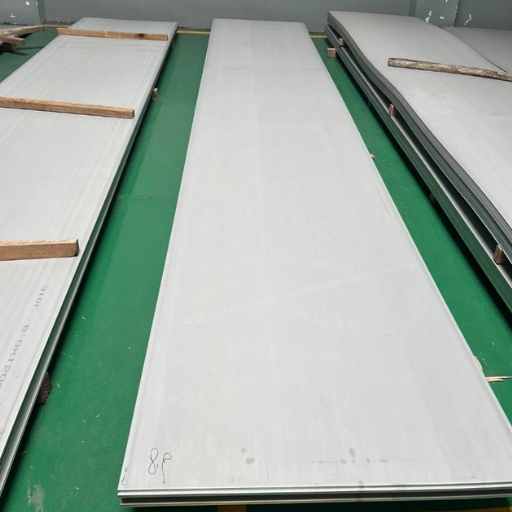
There appears greater rising need for materials that are resistant to corrosion practically in places involving water and salts, marine, and chemical industries, and technological industry. One of the discernible changes is the increased application of duplex and super duplex stainless steels, as they possess better features in terms of cost, strength, and wear, which discourages the use of traditional alloys. Additionally, there is an increased focus on sustainable material selection strategies, where preference is accorded to longer-lasting materials that have minimal adverse environmental effects. Industrial standards, such as ISO 15156, exist, which enable the conformity of materials to the critical use, safety, and operation associated with these materials, especially in hostile conditions. All these factors also present challenges, as they demonstrate particular advancements in tree generation materials. For example, gradgrade 316n is fibre-coated.
Current Trends in Steel Grades
Enhancements to steel grade 316n are generally aimed at improving strength, resistance to corrosion, and performance under severe conditions. In my view, the trend is more of a shift towards high-strength alloys, while also paying special attention to ecological innovations. For instance, the introduction of ultra-high-strength steels and low-carbon manufacturing techniques are ways of upholding these tenets, while at the same time meeting the global standards. All of these emphasize the favorable performance versus the sustainability ratio.
Future Developments in Stainless Steel Technologies
The development of various innovations in stainless steel is likely to be enhanced by advances in materials, manufacturing, and environmental protection. One of the predominant shifts is focused on low-carbon stainless steel. Some sources project that the global market for stainless steel will expand at a compound annual growth rate of approximately 5.5% between 2023 and 2030, with the bulk of this growth stemming from the construction, automotive, and energy industries.
Among budget manufacturing techniques, powder metallurgy and additive manufacturing (AM) provide the possibility of designing highly complex stainless steel components and producing components with almost no waste material. For example, in the fabrication of stainless steel parts, the strategy of rapid prototyping has been enhanced for commercial purposes, providing customizable and economical solutions to industries such as aerospace and medical device manufacturing.
Moreover, another development which can be regarded as positive is the presence of high-nitrogen stainless steels (HNSS), which are characterized by high strength and corrosion properties, while they include less expensive alloying elements such as nickel. These materials find excellent application in the marine and chemical processing industries, where harsh environments prevail.
Moreover, more attention is given to the recycling and sustainability procedures in stainless steel manufacture. Currently, more than 90% of stainless steel is recyclable, making it one of the most environmentally friendly metals. Companies possess the technological capability to enhance the recycling processes of stainless steel smelting and refining systems, while simultaneously analyzing the energy figures used. Electric arc furnaces, as a case in point, utilize recycled materials as outlines in the different layers of the mode matrix thereby almost totally reducing the carbon.
Eventually, innovations in surface modification and nanostructuring, such as the deposition of innovative coatings and laser patterning, are improving the outlook and performance of stainless steels. Thus, these coatings reinforce enhanced scratch resistance, antibacterial action, and self-cleaning, enhancing applicability in medical devices and sterile products, to even consumer goods and smart devices.
Indeed, these advances indicate that the stainless steel market is a highly buoyant one, where innovative advancements at one end are balanced with a green philosophy at the other to meet the world’s rapid pace of development.
Impact of Regulations on Steel Manufacturing
Regulations constitute a significant aspect of the steel-making sector, determining how processes are carried out and the industry’s impact on the environment. They are meant to balance safety, environmental, and moral concerns with the need to compete in the world market. Below are five such significant laws and their relation to the steel industry:
Capping Carbon Emission
Maintenance of strings on carbon emissions through manufacturing activities leads to the adoption of green technologies with lower emissions of gases in the atmosphere from manufacturing processes. A case in point is the introduction of carbon trading systems that are market-innovative, driven, and application-oriented.
Sewerage Treatment
Every nation has a Water Pollution Prevention Act and enforces the requirements under which the effluent from any industrial activity must be subjected to treatment. For example, the steel mills require sophisticated filters to be installed in the plant, which increases the operating costs of the steel mill.
Health and Safety at Work
gradgrade 316 n in the mean pretense. The Recycle Adapter can be used with a clean bottom gradding, making this an acceptable one mV wastage. Consume 6. Give sparse head spacing in recycle adapters at a maximum of 1 mV. These measurements are responsible for maintaining safety levels in steel industries, such as filling stations, where OSHA Workers must ensure guaranteed safety and surfaces have current safety practices, including various protective wear, and carry out hazard evaluations of the available equipment. Regular workplace and workers’ training help reduce accidents.
Trade on Quotas and Tariffs
Measures such as guard steels from importation of duties, promotion and yemiparaition policies, among others, are sought to throw away and eff c weights institutions. On the contrary, the policies such as availability of material removal incites rise as this policy protects respective industry, straining resources.
Reusing and Advocating Circularity
Rules that promote the material recovery and the reduction of the waste help in the re-utilization of the steel scrap, thereby saving the steel and reducing the frequency of producing the raw material.
In addition, these beliefs among those few ensure the transformation of the sector, as well as the design of innovations that address the need to incorporate environmental and social issues.
References
Academia.edu:
COLLEGE OF EDUCATION
This document discusses various educational and technical aspects that may provide insights into the context of “GradGrade 316n.”
U.S. Department of Transportation – National Transportation Library:
Design and construction of precast piles with stainless reinforcing steel
This source discusses the use of stainless steel materials, including their properties and applications, which could be relevant to 316N stainless steel.
Google Books:
A Nitrogen Grade of Types 304 and 316 Austenitic Stainless Steels
This book discusses nitrogen grades of stainless steels, including 316N, and their inclusion in ASTM specifications.

